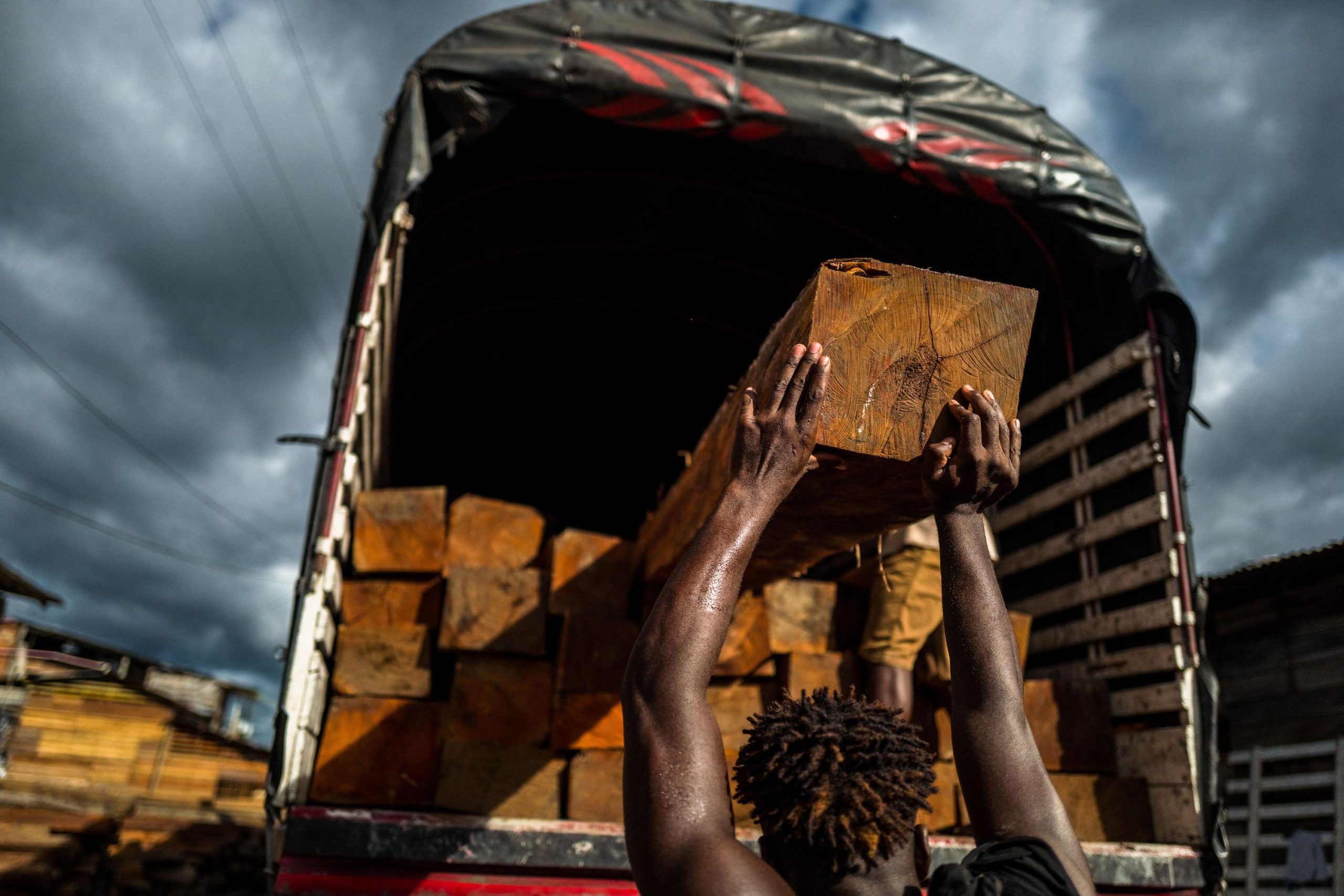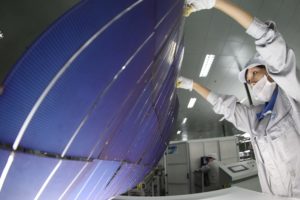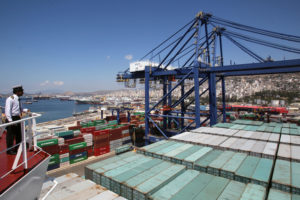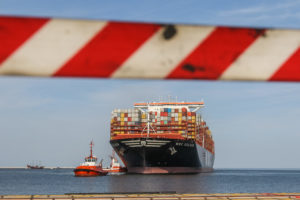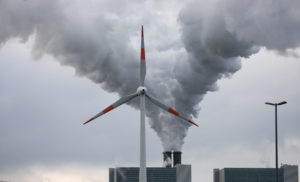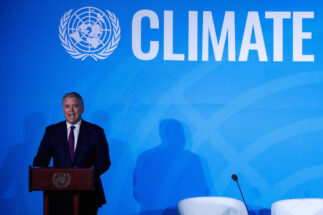There is no solution to the twin environmental crises of climate change and biodiversity loss without addressing commodity-driven deforestation, particularly in the tropics. Deforestation cannot be curbed without cooperation by the EU and China, the two largest markets for forest-risk commodities. Both have valuable and complementary experiences to contribute. The 2021 UN climate and biodiversity meetings – COP26 and COP15 – provide a critical opportunity for advancing this collaboration.
In line with the Paris Agreement, the EU and China have committed to reaching net-zero greenhouse gas emissions before 2050 and 2060, respectively. This will require a focus on land-use and food systems, which currently account for 30% of greenhouse gas emissions via activities including crop and animal farming, aquaculture, fishing and deforestation.
Many of these emissions are embodied in internationally traded “soft commodities”, mainly in the form of agricultural products, seafood and timber. China and the European Union are the two major importers of soft commodities. Their demand was the major driver of the 3.8 million hectares of humid tropical primary forests lost in 2019.
Indeed, sustainable agriculture and forest supply chains are critical for achieving the Sustainable Development Goals. They must underpin the 2021 Food System Summit in New York, the COP15 biodiversity summit China will host in Kunming, and the COP26 climate summit the UK will host with Italy in Glasgow, if these events are to be successful. As co-hosts of these conferences and the world’s largest importers, the EU and China have vital roles to play in building international momentum for greening soft commodity supply chains around their commitments to achieve net-zero emissions by the middle of the century and 2060 respectively. The UK has also identified sustainable supply chains as a priority for the climate talks.
Critically, the EU and China will only be successful in greening soft commodity supply chains if they work together, draw on each other’s experiences, and in turn partner with producer countries.
The context is challenging. The EU–China relationship is at a low point, with each side having major misgivings about the other related to trade, security, diplomacy, technology, human rights and mutual respect. At the same time, both sides know that they need to cooperate for their own benefit and to better manage key global commons such as the atmosphere and the ocean. The increasingly confrontational relationship between the US and China, which is unlikely to change fundamentally under the Biden administration, further increases the importance of a constructive EU–China relationship.
The EU and China can lead by example by integrating the greening of supply chains into their own climate and biodiversity strategies
Greening international supply chains offers one opportunity for positive collaboration between both powers. Success will require technically sound and holistic approaches to tackling the socioeconomic drivers of unsustainable supply chains.
The EU and the UK have been leading international efforts to green supply chains with a focus on demand- and supply-side measures. These are summarised in a recent report by the China Council on International Cooperation on Environment and Development (CCICED). They include prohibiting the import of illegally sourced commodities; strengthening due diligence and traceability systems; advancing transparency and traceability tools and technology; increasing international cooperation (including South-South Cooperation) to support green soft commodities; and aligning international financial incentives with green supply chains. Examples include the 2006 Amazon Soy Moratorium; the EU Forest Law Enforcement, Governance, and Trade (FLEGT) Action Plan; EU Timber Regulation; commodity certification schemes such as FSC and RSPO; and China’s new Forest Law and Green Investment Principles.
As important as individual supply chain initiatives are, they need to be complemented by economic instruments, to incentivise farmers and producer countries, as well as enhanced land-use planning management policies that identify and address competing demands on land. If, for example, global palm oil initiatives were to curtail the expansion of oil palm plantations into forested areas, then other crops, infrastructure development, or mining, might still encroach upon forested areas leaving deforestation rates unchanged. Countries will only reduce deforestation if international pressures through supply chains and domestic drivers of land-use change are managed with integrated approaches. This is an area where China has unique domestic experiences.
Converging interests in China and the EU
Over the last decade, China’s political leadership has emphasised the need to protect the country’s natural capital and introduced several policies under the concept of “Ecological Civilization”. The country’s agricultural redline puts a minimum floor on the amount of land used for agriculture. The Ecological Conservation Redline initiative commits over a quarter of China’s territory to varying degrees of protection for biodiversity, natural disaster mitigation and critical ecosystem services. By integrating various land-use policies under the forthcoming 14th Five Year Plan, China is the only large economy with a strong national spatial land-use planning framework for food security, climate, biodiversity, water and other ecosystem service objectives.
China’s experience in integrated national land-use planning holds important lessons for other countries. They need to be combined with the more traditional supply and demand-side approaches to green individual commodity supply chains. Sustainable soft commodity supply chains will help China strengthen its long-term food security; gain international stature by sharing lesson from its ecological redlines initiative and other land-use planning frameworks; support the greening of China’s international infrastructure investments under the Belt and Road Initiative; and – critically – support an ambitious outcome at the biodiversity talks in Kunming.
Under the European Green Deal and its Farm to Fork Strategy, the EU has reaffirmed and strengthened its 2019 policy for greening soft commodity supply chains. The EU is now promoting “Green Deal diplomacy” that can help green supply chains as part of broad frameworks for cooperation with producer countries.
At the same time, European leaders are emphasising the need for a “geostrategic relationship” with China. This will require agreeing to disagree with China on some issues, but a functional relationship also needs areas of positive, constructive collaboration. The greening of supply chains to deliver against climate, biodiversity and development goals might be one such area.
Towards a shared EU–China strategy
China and the EU can promote ambitious outcomes at the biodiversity and climate summits by combining the “Western approach” of greening supply chains with the “Eastern approach” of integrated land-use planning under ecological civilization. Put differently, “vertical” supply chain initiatives, as championed by European countries, can and need to integrate with “horizontal” policy frameworks for land use, as advanced by China. This combination can achieve lasting change and add to a geostrategic China–EU relationship rooted in mutual respect, collaboration and learning from one another.
The motivation for such as collaboration is founded on the self-interest of both China and the EU and it can support and strengthen the multilateral frameworks that both promote. For this reason, efforts to green soft commodity supply chains should be pursued under the Convention of Biological Diversity (CBD) and the United Nations Framework Convention on Climate Change (UNFCCC). The EU and China can lead by example by integrating the greening of supply chains into their own climate and biodiversity strategies and supporting producer countries to do the same, including through the integration of land-use planning frameworks and other policies for greening international supply chains. EU–China efforts can be coordinated with the UK which, as host of the next climate talks, is advancing a Sustainable Land Use and Commodity Trade dialogue.
As a first step for building trust and confidence, China and the EU may consider coordinating their approach to greening international supply chains and advancing the CBD and UNFCCC in a small number of countries. For example, China has identified Ethiopia and Indonesia as initial focus countries for greening the BRI. European countries have a long history of working in these and other countries with tropical forests. Another opportunity might be to consider joint financing mechanisms to support the greening of supply chains in forest/producer countries. China’s desire to catalyse new funding for biodiversity under the CBD could be linked to existing EU support for producer countries. A shared approach on financing might overcome some of the challenges that have so far prevented the alignment of incentives for producer countries to stop deforestation.
The recently launched high-level EU–China Dialogue on Environment provides the framework for exploring greater cooperation on greening soft commodity supply chains. Such a collaboration will advance each side’s interests, deepen EU–China relations, and strengthen momentum for ambitious outcomes at the major biodiversity and climate talks in 2021.
